Personal Protective Equipment (PPE) is a lot older than you might think. For millennia, the diverse peoples of the Eastern Mediterranean region have donned protective amuletic objects and engaged in ritual acts to protect themselves while navigating the trials and tribulations of life.
Monumental temples and sacred statuary that survive attest to religious traditions supported by an ancient elite or that carried an “official” status in religious life, such as the Roman Imperial Sanctuary of Apollo in Kourion, Cyprus. In contrast, the ubiquity of protective amulets, figurines, curse tablets, and pilgrim flasks across domestic, public, funerary, and sacred spaces demonstrate the pervasiveness of a personal, everyday lived religion.
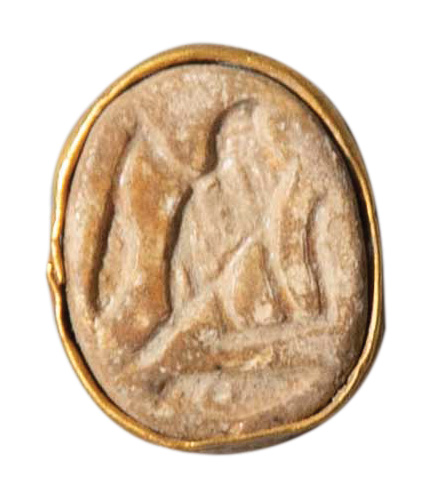
Beth Shean, 1300–1200 BCE
Deities of different traditions could be combined during periods of intense cultural exchange. The falcon deity on this scarab amulet may depict the Canaanite god Horon merged with the Egyptian god Horus.
Museum Object Number(s): 29-104-71
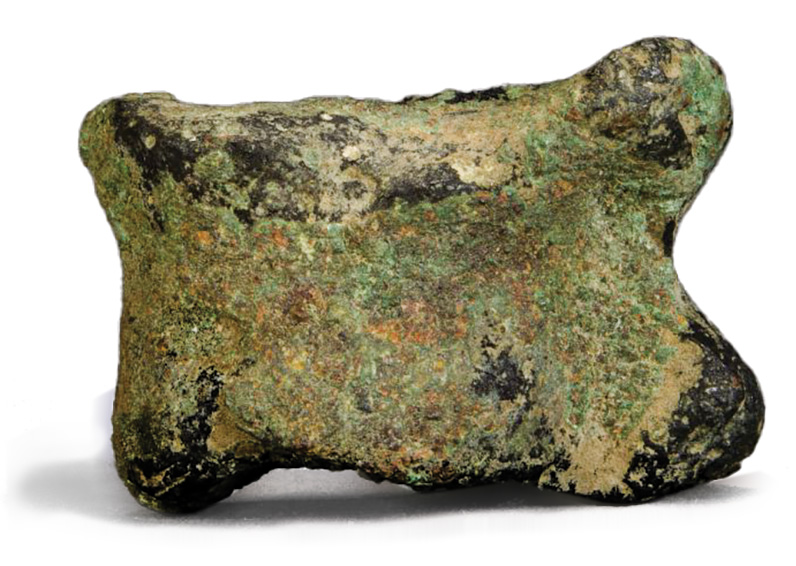
Kourion, Cyprus, Sanctuary of Apollo, 500–600 BCE
The knuckle bones of hooved animals were widely collected and rolled like dice in games, used to help anticipate the future, or make difficult decisions. Each of the six sides had a divinatory significance through which gods and spirits could communicate advice or prophecy. Astragali cast in bronze might be given as offerings in temples, like this one from the Sanctuary of Apollo in Cyprus.
Museum Object Number(s): 54-28-202
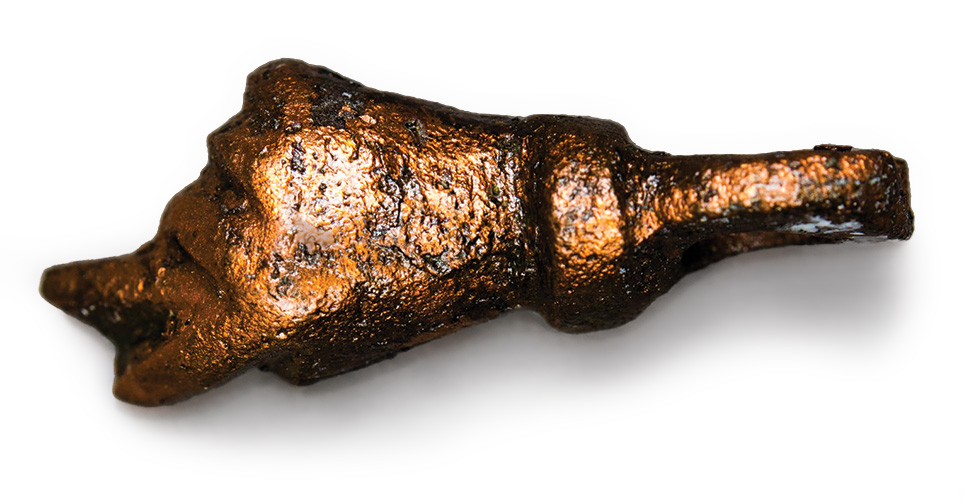
Beth Shean, 300–400 CE
With thumb thrust between the index and middle fingers, this amulet captures a hand gesture still familiar to many cultures today, though its meaning varies. As a charm worn in the ancient Mediterranean, it conveyed a gesture meant to ward off evil spirits or the evil eye.
Museum Object Number(s): 29-108-248
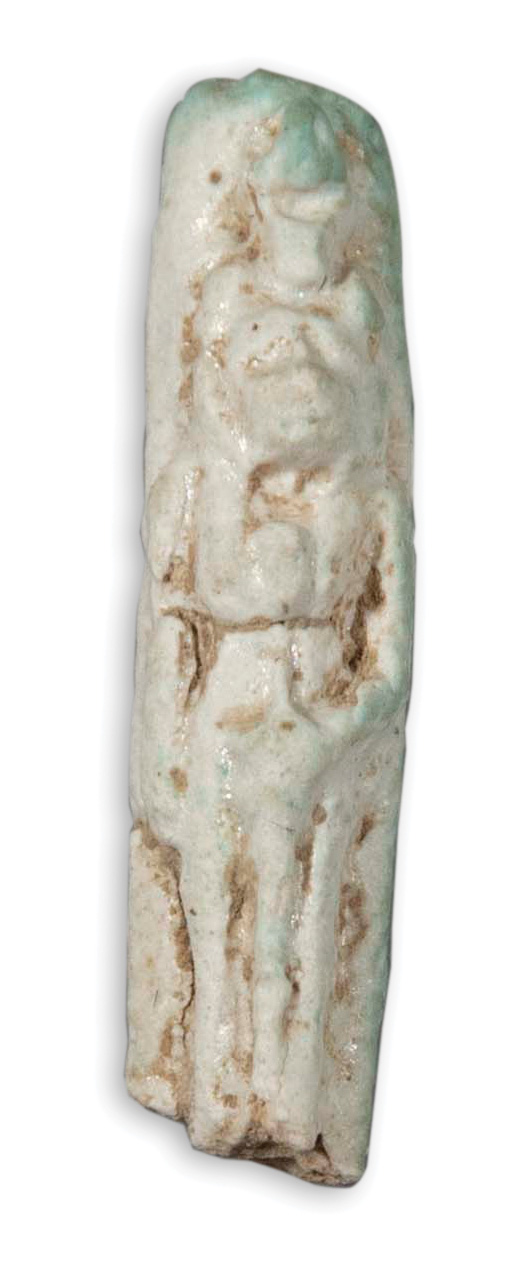
Beth Shean, 1300–1200 BCE
The images of some deities, like Sekhmet, represented a high level of protection. In the form of a fierce lioness, the goddess could effect violent destruction as well as ward off illness and disease. Egyptian faience amulets like this one spread widely through the Mediterranean and remained popular through the Late Antique era (400–700 CE).
Museum Object Number(s): 29-104-223
Through powerful images, words, and rituals these objects connected the practitioner to a world teeming with gods, spirits, saints, demons, and other invisible forces that could be called on for help and guidance, regardless of one’s faith or social class. For a nervous investor, wearing an amulet may promote success in business. To a wronged neighbor, a curse might bring justice. Holy oils from a shrine or water from a sacred spring may cure a relative in pain. Early medicine, religion, and science mixed as well as competed with these varying forms of magical protective, healing and divination practices.
Today and in the past, magical beliefs and practices have constituted a wide array of behaviors and ideas interpreted differently across cultures. Spiritual practices became entangled and new traditions emerged as migrants, merchants, and armies (both local and foreign) crisscrossed the Eastern Mediterranean. Portable amuletic objects and figurines are a byproduct of this crossroads. They reflect the permeability of coexisting religious communities and often defy strict cultural or religious categorization.
Far from the “orthodox” and polemical religious texts that record the rhetoric of an elite minority, magical objects provide direct evidence of the fears, anxieties, and hopes that motivated the wider population to action. Even as there were top-down attempts to suppress certain magical activities, such as the Theodosian codes (5th century CE) of the Late Antique era, archaeology and anthropology have demonstrated that use of magic continued uninterrupted.
Magical Objects
Pictured here is a small cross section of the personal protective and divinatory objects on display in the new Eastern Mediterranean Gallery spanning over 4,000 years in the region. Acting as intermediaries between humans and the divine, these objects remain a powerful reminder of the complex network of earthly and heavenly relationships on which people continue to rely for navigating everyday life.
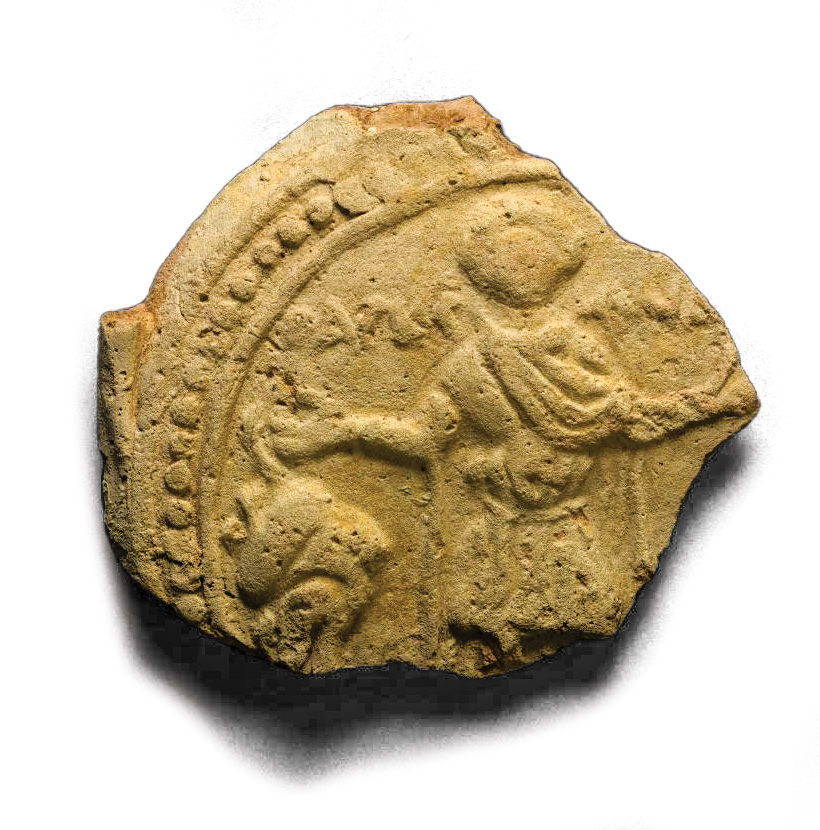
Beth Shean, Israel, 500–700 CE
Like today, pilgrims seeking a physical connection to the divine collected miraculous oils and soils from sacred locations to bring home following their travels. A pilgrim from Beth Shean traveled many days to visit the shrine of St. Menas in Egypt, a Christian martyr and miracle worker. They carried home a flask with the saint’s image on it—possibly as a keepsake or gift. Vessels like this often contained oil or water sanctified by proximity to the shrine and used in healing or offering rituals.
Museum Object Number(s): 29-102-176
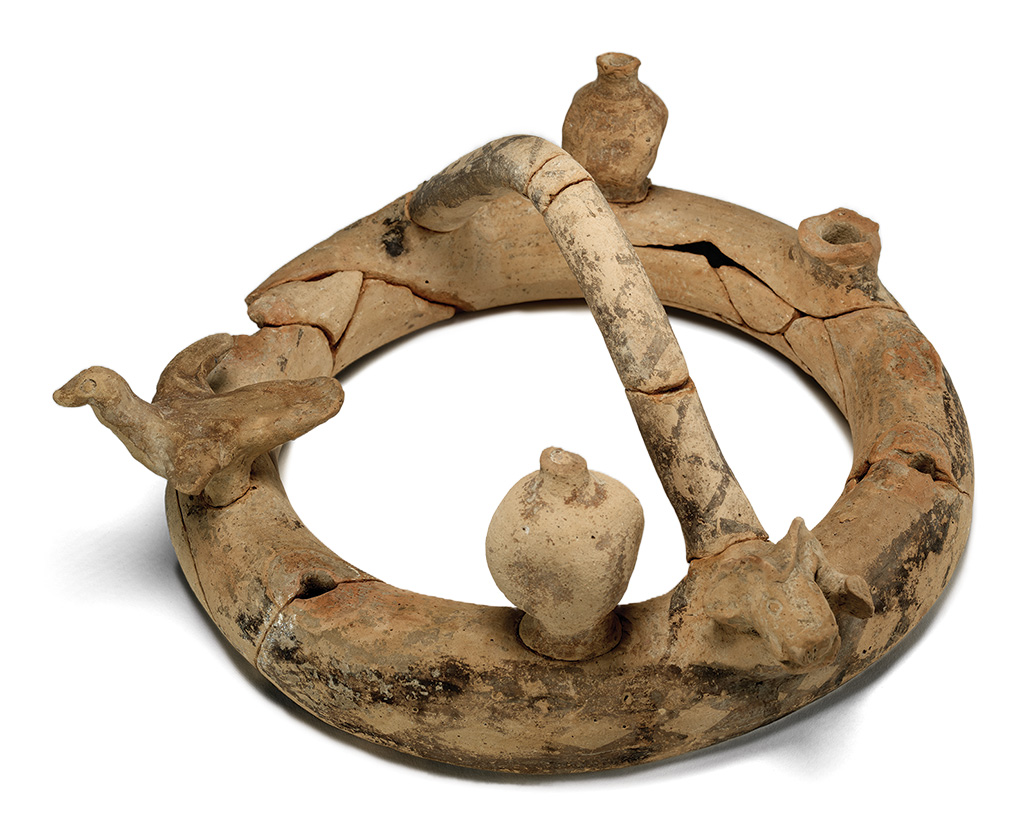
950–900 BCE, Lapithos, Cyprus
Hollow ring-shaped vessels, called ring kernoi, are found in tombs, houses, sanctuaries, and large pits across West Asia and the Mediterranean. Liquids like water, oil, milk, or wine flowed around the ring base and could be poured out of attachments along the top in the form of animals, plants, and miniature cups. They emphasized different aspects of fertility and the ring represented the waters that irrigate the earth. Taken together these kernoi formed models of the cosmos that people used in funerary and other ritual contexts to communicate with and make offerings to the divine and explore the boundary between life and death.
Museum Object Number(s): 32-27-1182
COVID-19 and the Myth of Disenchantment
There’s no question that the problems facing ancient people, like sickness, heartache, financial disputes, and so on, are just as prevalent today. Although we’ve largely found different methods to address them through secular medicine or technology, magical thinking and the engagement with a supernatural world has never gone away. Scholars of anthropology, religion, and folklore increasingly acknowledge that the acceptance of some form of the supernatural is a contemporary universal. Jason Ananda Josephson Storm, Professor of Religion, Williams College, notes in his book The Myth of Disenchantment: Magic, Modernity, and the Birth of the Human Sciences that the assumption that magical practices have been on the decline since the Age of Enlightenment or Scientific Revolution is but a modern-day myth. Today it may look or mean something different, but the practice of carrying coins or charms for luck, of wearing saintly pendants for protection, and seeking astrological advice and understanding are as common as ever.
Among many faiths too, homeopathic practices and amuletic objects remain to comfort, guide, and cure users. In times of crisis like the COVID-19 pandemic, this became especially visible. Religious leaders, social media influencers, and politicians alike advertised a diverse spread of amulets, prayers, and exorcisms. Across the world, practitioners of Judaism, Christianity, and Islam, traditions born in the Eastern Mediterranean, were among those utilizing the power of sacred words, purification rituals, and various spiritual agents to combat the virus. Merchants of Catholic rosaries, prayer cards, and wearable saint medals updated their wares to emphasize protection against illness or COVID specifically. A group of Orthodox Jews in Israel distributed written amulets protecting against the coronavirus by invoking the Book of Numbers story of Pinchas preventing a plague among the ancient Israelites. Some Muslim communities have retained, since before the medieval era, the use of special bowls covered in Quranic verses which imbue water or other home remedies with healing and purifying qualities. Calls over the past two years by some Muslim leaders to disavow amulets as haram or forbidden in Islam, show a continued market for their use.
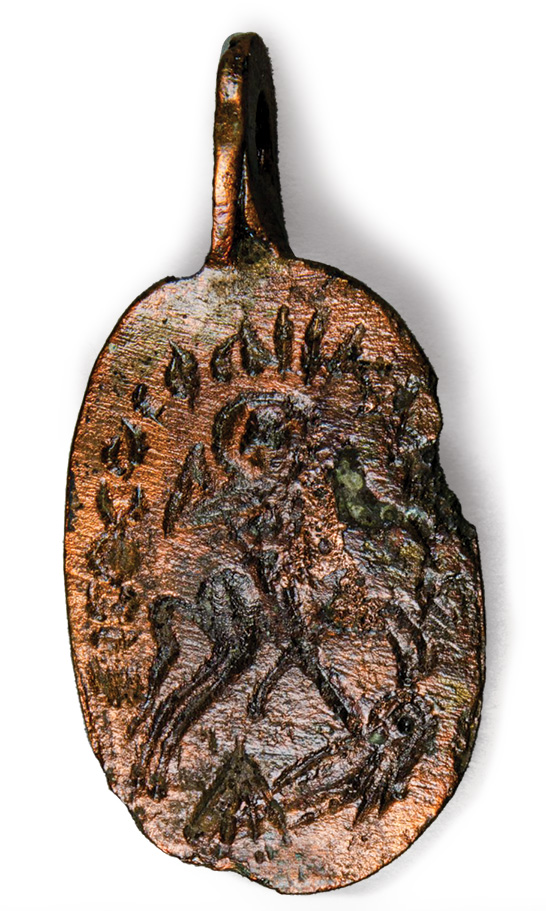
Beth Shean, 300–400 CE, Greek
This amulet features a riding saint or “Holy Rider” spearing a demon. The Greek text reads, “the one conquering evil through God.” The evil figure is often identified with a class of demons called gelloudes thought to bring harm to pregnant women and infants. The opposite side shows an evil eye being attacked by knives and various dangerous animals.
Museum Object Number(s): 29-108-254
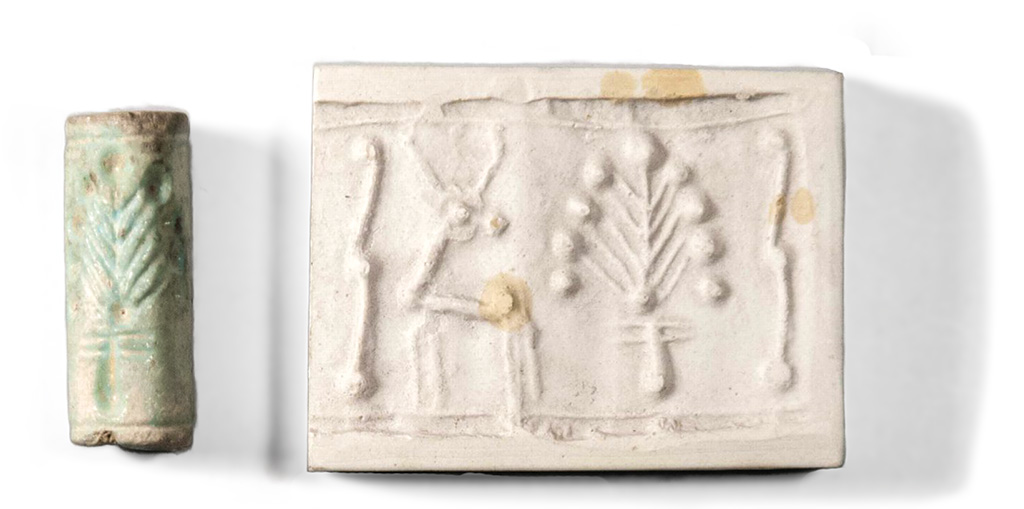
Beth Shean, 1500–1250 CE
Cylinder seals could act as both personal signatures and protective amulets. In Bronze Age Canaan, common divine imagery such as the sacred tree and sacrificial gazelle were influenced by a nearby kingdom called Mitanni.
Museum Object Number(s): 29-104-138
Egyptian Amulets
As a popular adornment, they offered divine support and protection to the wearers, including the gods themselves. During the Egyptian occupation in Canaan such charms became a common part of foundation deposits, offerings buried in the floors, walls, or under the steps leading to an altar or sanctuary in a temple.
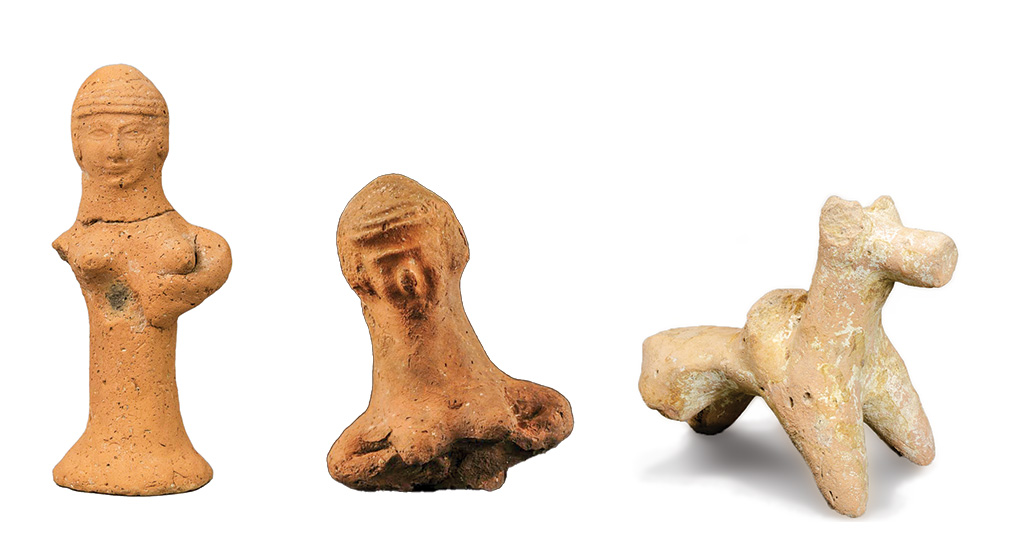
Beth Shemesh, Israel, and Gibeon, Palestinian Territories, 1000–600 BCE
Figurines like these became popular in Judah as the Neo-Assyrian Kingdom gained control and spread west. Brightly colored animal and female pillar figurines are found predominantly in domestic contexts and suggest to some scholars a widespread form of healing or protection ritual performed in the home. Many questions and debates surround these female figurines, particularly their possible identification as the goddess Asherah, a consort to some forms of the Israelite god.
Museum Object Number(s): 62-30-398 / 61-14-1319 / 61-14-1289 / 61-14-1318
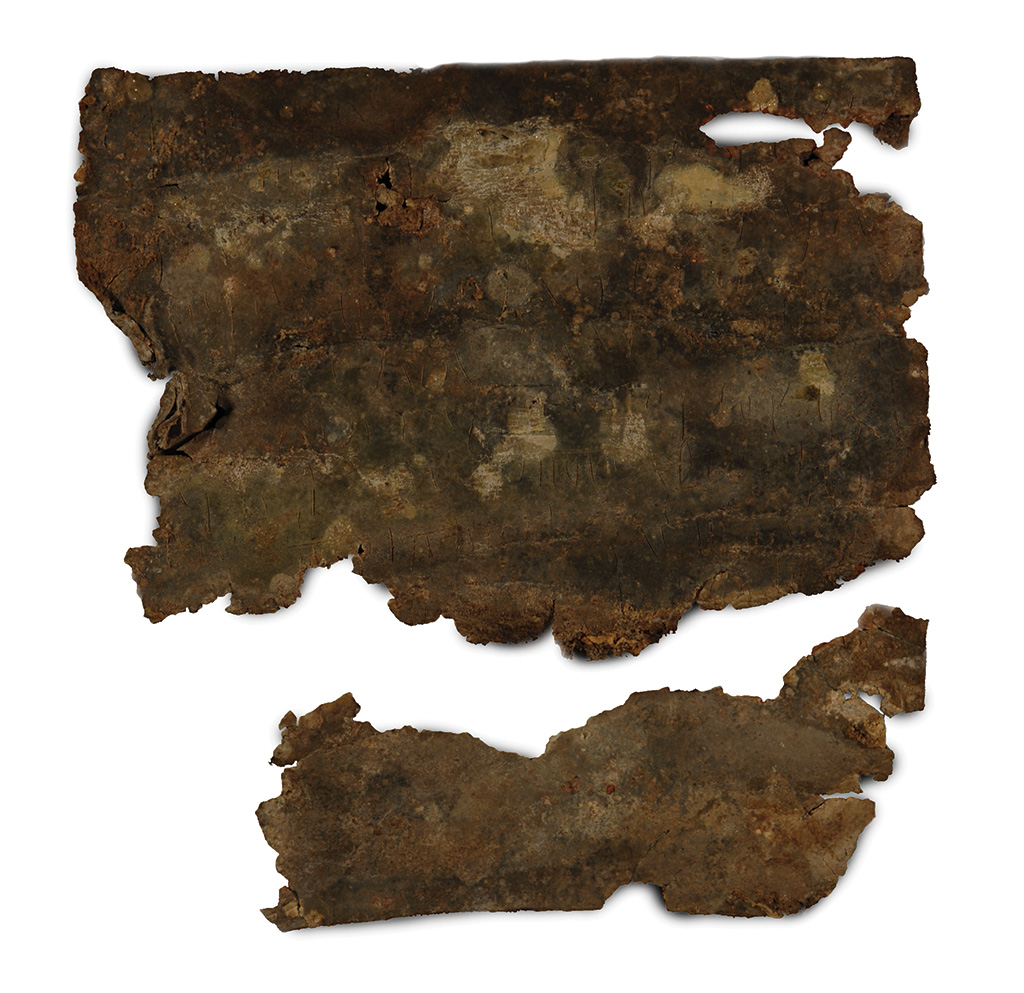
Beth Shean, 300–400 CE, Greek
Greco-Roman polytheists, Christians, and Jews alike used this common magical device to improve their circumstances. Through rolling and piercing this lead tablet, Panarchia, likely a Christian resident of Beth Shean, called on a myriad of supernatural beings (from Biblical angels to Osiris and the Mesopotamian goddess Ereshkigal) to curse her enemies amidst a money dispute. The power of the inscribed spells also came from the use of magical symbols, called charakteres, and mysterious words known as voces magicae.
Museum Object Number(s): 29-108-602
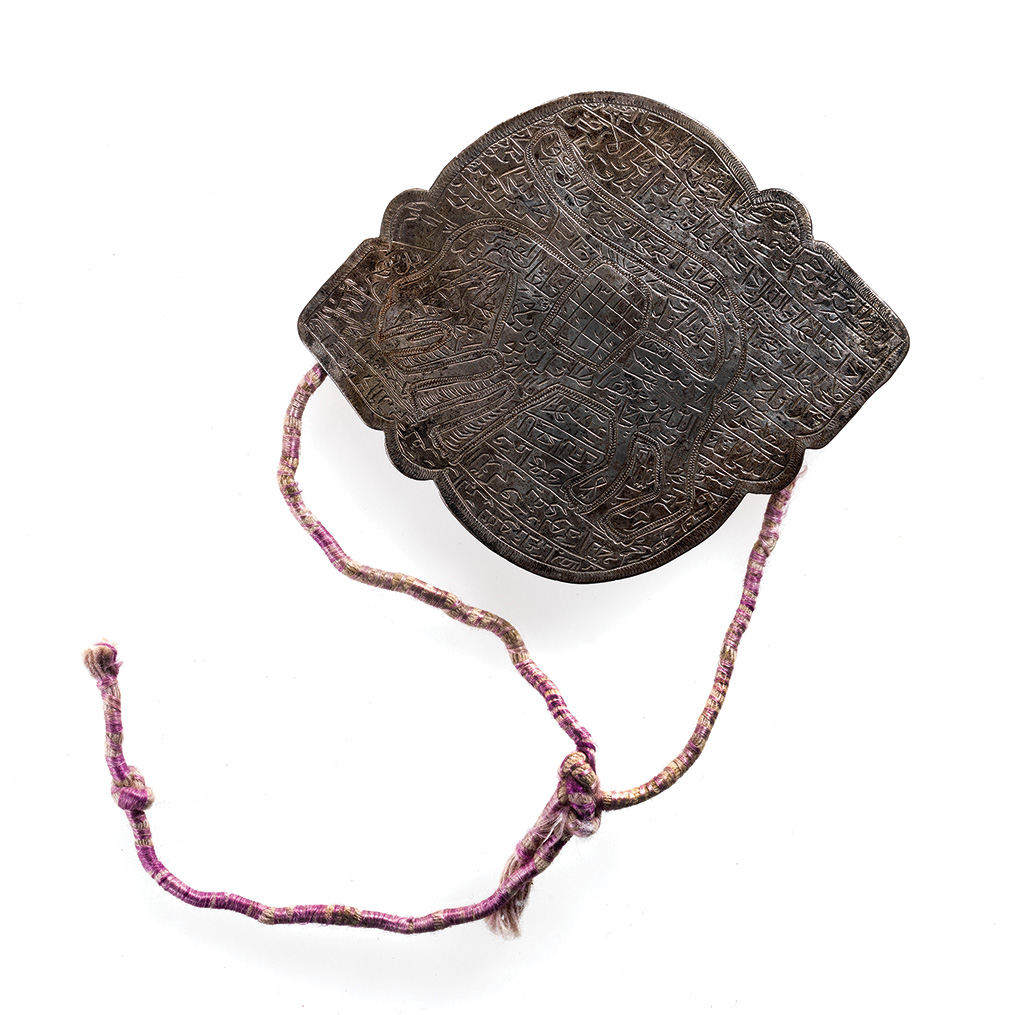
Iran, 1700–1800 CE, Arabic
Within many Muslim communities today and in the past, amuletic devices are carried or worn, imparting divine protection. The power of these objects comes from the Qur’anic verses and stories, astrological signs, and symbols of the prophets elegantly inscribed on their surface. Many contain sacred geometries that could reference the 99 names of God (Allah) or the names of archangels arranged in a matrix.
Museum Object Number(s): 29-221-220
